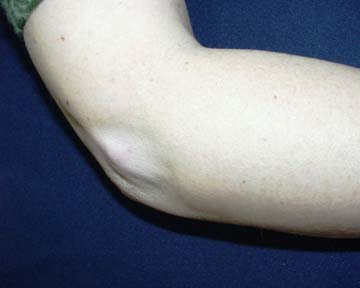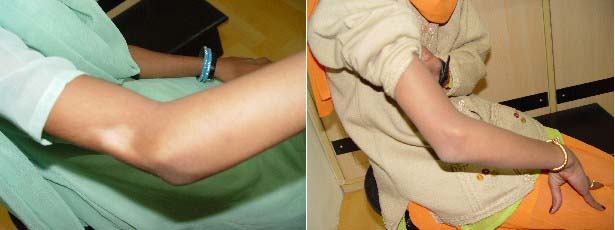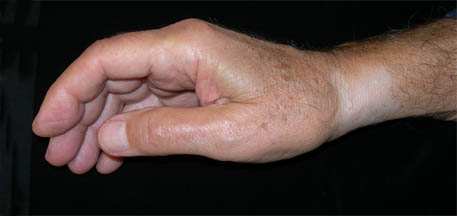Cortisone Injection
First of all, will it hurt?
This is usually the first question everyone asks, particularly if you have had a cortisone shot previously. Believe it or not, NO. You don't believe me, do you? Well, let me put it this way: I can give a shot to a child under age 10 and 99% of the time the child does not cry. How is that for proof? You know that a child will cry if it really hurts, and the only reason they don't cry is that it didn't. I have been doing this for years, and the most common reaction from a patient who has just had a shot is, "How did you do that? That didn't even hurt!"
How do I do it painlessly?
I put fast acting numbing medicine in the shot. What is it? Lidocaine (a numbing medicine) that I have specially buffered (made the pH the same as the body's) to take all of the sting out of it and to speed up how fast it works. The Lidocaine usually is effective in one to two seconds. Amazing, right? This way, you do not feel the long acting numbing medicine or the steroid medicine, which is actually the medicine that does the job. If you want to read what my patients have written about getting an injection from me, click here.
What is cortisone?
Cortisone is a naturally-occurring anti-inflammatory hormone that is found in your body. The body is a balance of inflammation (a preparatory step to healing) and calming down of inflammation. When your body is out of balance, it may benefit from an application of cortisone. In my practice, cortisone injections are useful in treating many conditions, for example, trigger fingers, tennis elbow, and TFC tears. The purpose of the injection is to calm down the excessive inflammatory process that may be going on because of injury, excess use, or similar problems. Cortisone injections can also be used for diagnosing some conditions, such as carpal tunnel syndrome, wrist ligament tears, etc.
The form of cortisone that I use is called triamcinolone acetonide. It has the longest duration of action and the greatest potency of the cortisones. The most likely side effect is decrease of skin pigmentation in a region about the size of a dime or a quarter. This is not permanent, but may last up to a year.
I usually combine the cortisone with both a short-acting anesthetic (Lidocaine buffered with 10% by volume of bicarb) and a long-acting anesthetic (Marcaine). This is why my injections hurt so little; in fact, it is routine for my patients to say that my injection is the least painful one they have ever had. That is one of my goals: to give you an injection that you tell me is the best you ever have had. Actually, they hurt very very little. Ask to see some of the things patients have written for me about how little their injection hurt.
What are the side effects?

This patient had a steroid injected for tennis elbow. Note the loss of skin color
(depigmentation). This usually resolves in three
to six months.
Many patients worry about cortisone injections, since they have heard so much negative press about steroids. However, you need to make a distinction between local (injected into just one, local area) steroids and systemic (pills that go all through your system, or body) steroids. The negative things you have heard are almost certainly mostly about systemic steroids, which are taken by weight lifters, body builders, and athletes. These substances have many negative effects, since they are not taken under a doctor's orders and are having an effect on the entire body. The injections that I give are not effective over the entire body, but have their effect locally, at the site of the injection. Also, I am giving only a small amount of medication. Systemic steroids have many undesirable side effects, and when taken without a doctor's supervision, can be very dangerous. Local steroids have only one common side effect (loss of pigmentation [skin color] around the site of the injection, the size of about a dime or quarter, and it usually resolves in several months to a year). This probably occurs, in my practice, less than once a year, and I give several hundred injections a year. The uncommon side effects are so uncommon that I cannot remember any patient ever having any! Talk to me about this, if you have any concerns. I would not recommend an injection of steroids unless I thought the benefits outweighed the risks, including pain and depigmentation.

This patient had some depigmentation that disappeared in three months.

This 89 year old well-tanned man developed this depigmentation a few months after
an injection, and still had it at 6 months later.
What else can I expect?
The injection, as noted in the first section, contains two kinds of numbing medicine, to help prevent it from hurting. The numbing medicine will make the finger or area numb, so don't be surprised. Many patients, after a trigger finger injection, ask me, "Why is my finger numb?" Because I just gave you a numbing shot. Simple, really. The steroid used is a combination of fast-acting and long-acting steroids. This is to try to prevent pain after the numbing medicine has worn off. If you get some increased pain after the numbing medicine has worn off, do not be dismayed. This occurs in about 15% of patients. This does not mean that something has gone wrong.
